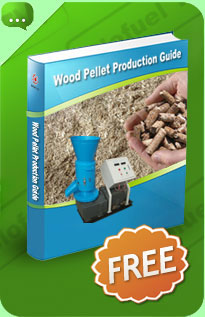Pellet Production Machine
The present invention relates to a pellet production machine in accordance with the introduction to the main claim.
In the state of the art, sawdust, the waste material from wood machining, is usefully reduced to pellets, i.e. pressed to form small cylinders of a few centimeters in length, which are then used for example as fuel in burners. Not only sawdust but also other materials such as cereals, bran, manure and fodder are reduced to pellets.
Pellet production machines currently present presser wheels which, with their lateral surface, press the material against a perforated wall from which the pellets leave by extrusion. These machines are divided into lateral extrusion machines in which the presser wheels, disposed with their axis horizontal, are positioned in the interior of a cylinder of perforated lateral surface rotating about a horizontal axis. The material to be reduced to pellets is fed into the rotating cylinder and is brought into contact with presser wheels by the cylinder movement, to be then extruded by the pressure of the presser wheels against the inner wall of the cylinder.
Other machines present a horizontal perforated surface on which the material to be reduced to pellets falls from above, and is then pressed by the lateral surface of the presser wheels which move over it with their axis horizontal. This second type of machine presents greater constructional complexity than the former and hence greater cost.
The power required to operate the machine or to produce at a given power is strongly dependent on the type of material to be reduced to pellets: for example finer sawdust requires lower power than coarser sawdust. A machine of 12 kW power produces between 80 and 130 kg/h of pellets, hence a maximum of about 10 kg/h per kW of power.
A machine with presser wheels of vertical axis which laterally extrudes the material presents the problem that the sawdust, or the material to be reduced to pellets, penetrates below the lower end of the presser wheels, causing them to seize rapidly.
An object of the present invention is therefore to provide a pellet production machine by which the stated drawbacks are overcome, a particular object being to provide a particularly reliable machine, with presser wheels of vertical axis.
Another object is to provide a machine which for the same power produces a greater quantity of pellets.
A further object is to provide a machine of vertical axis and hence operationally simpler and more compact, as the material to be reduced to pellets is made to fall from above.
Said objects are attained by a machine the inventive characteristics of which are defined by the claims.

